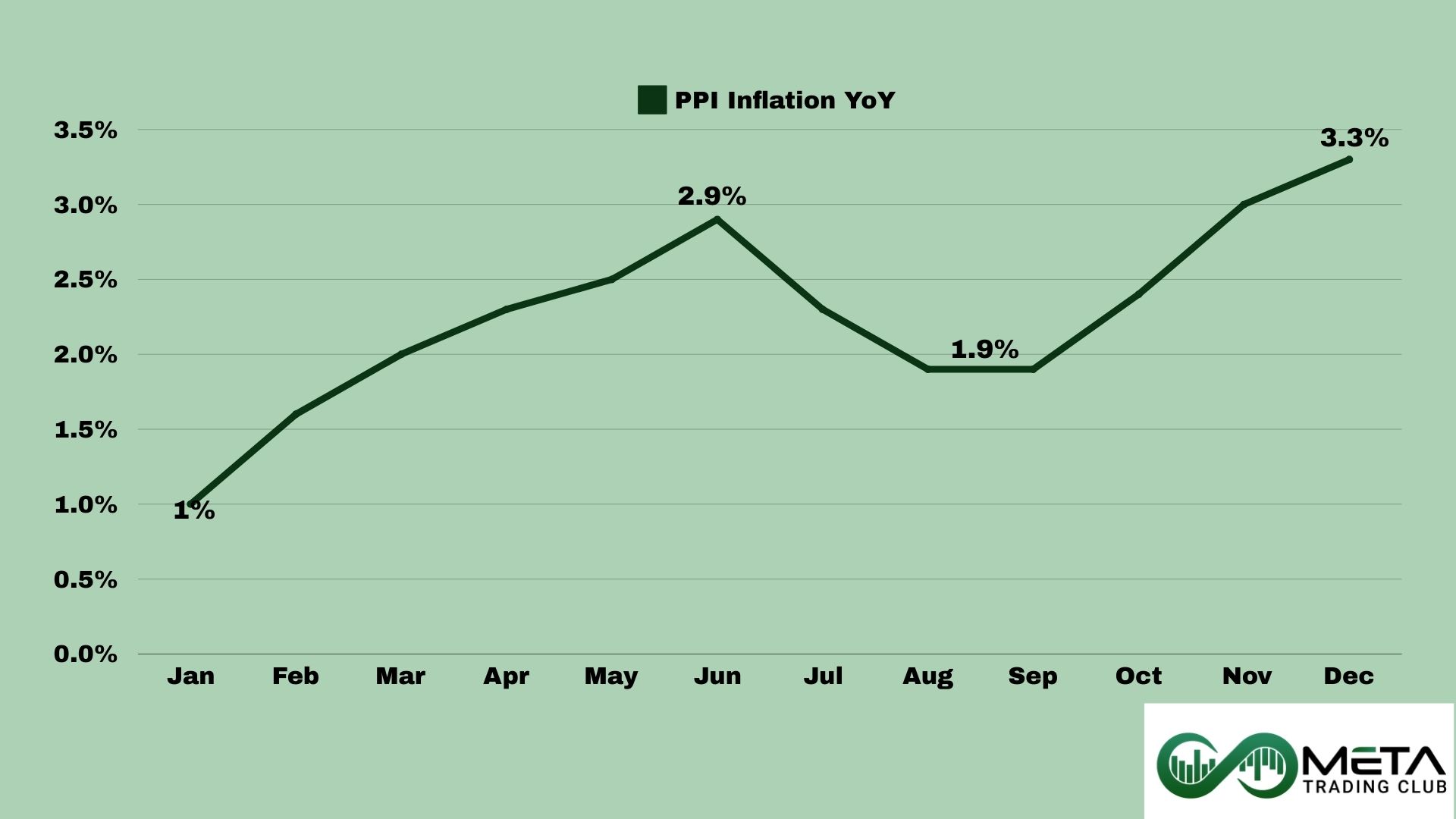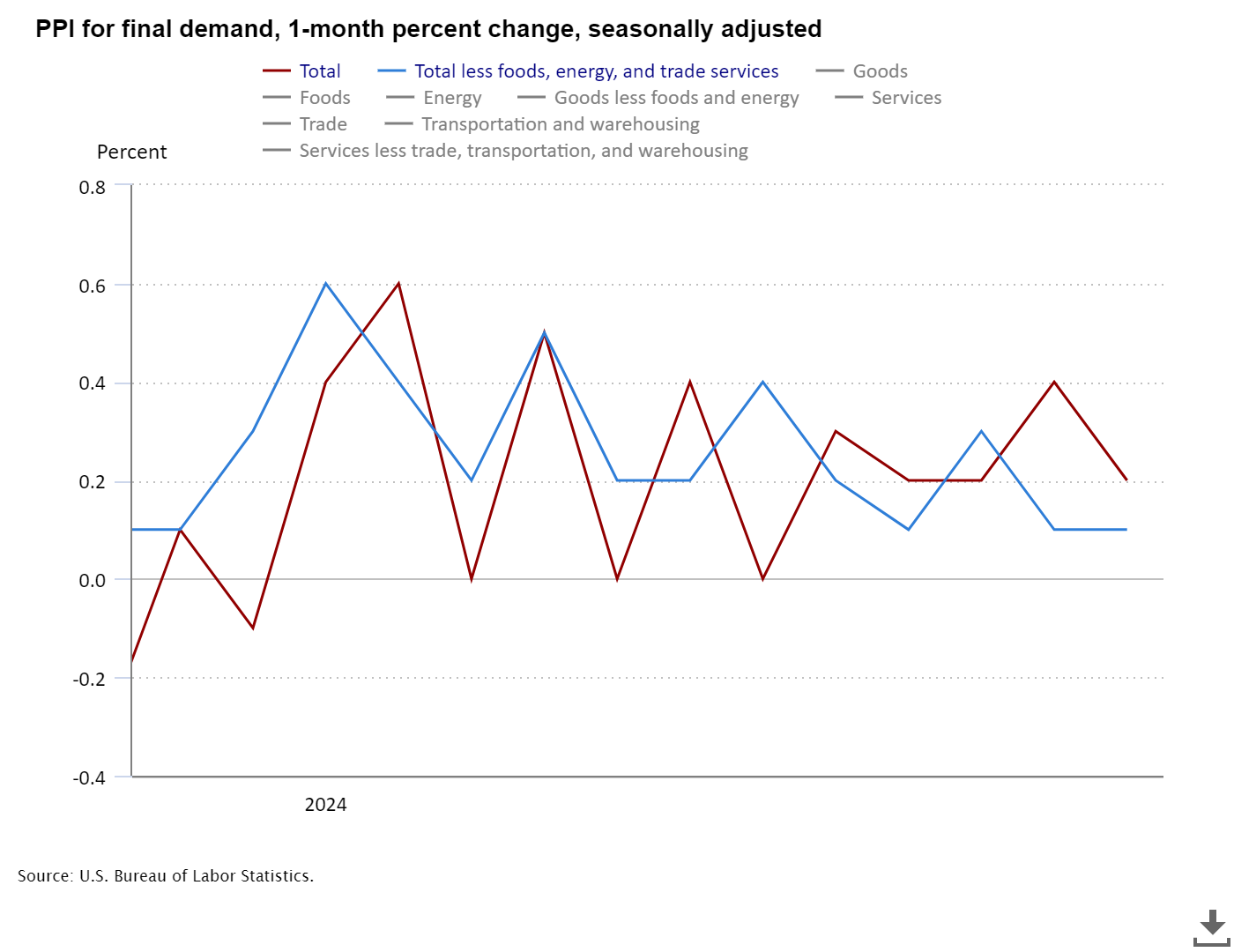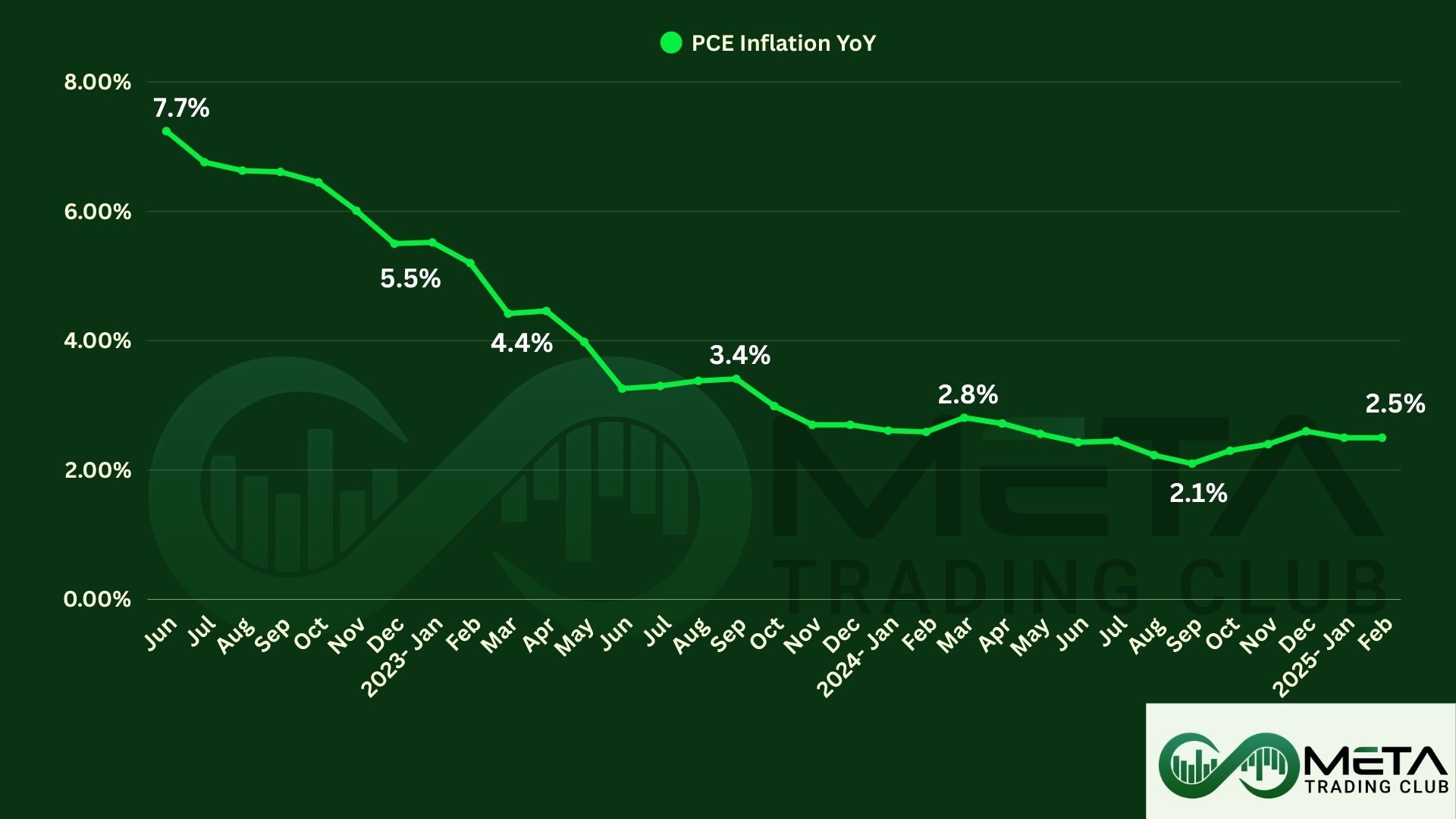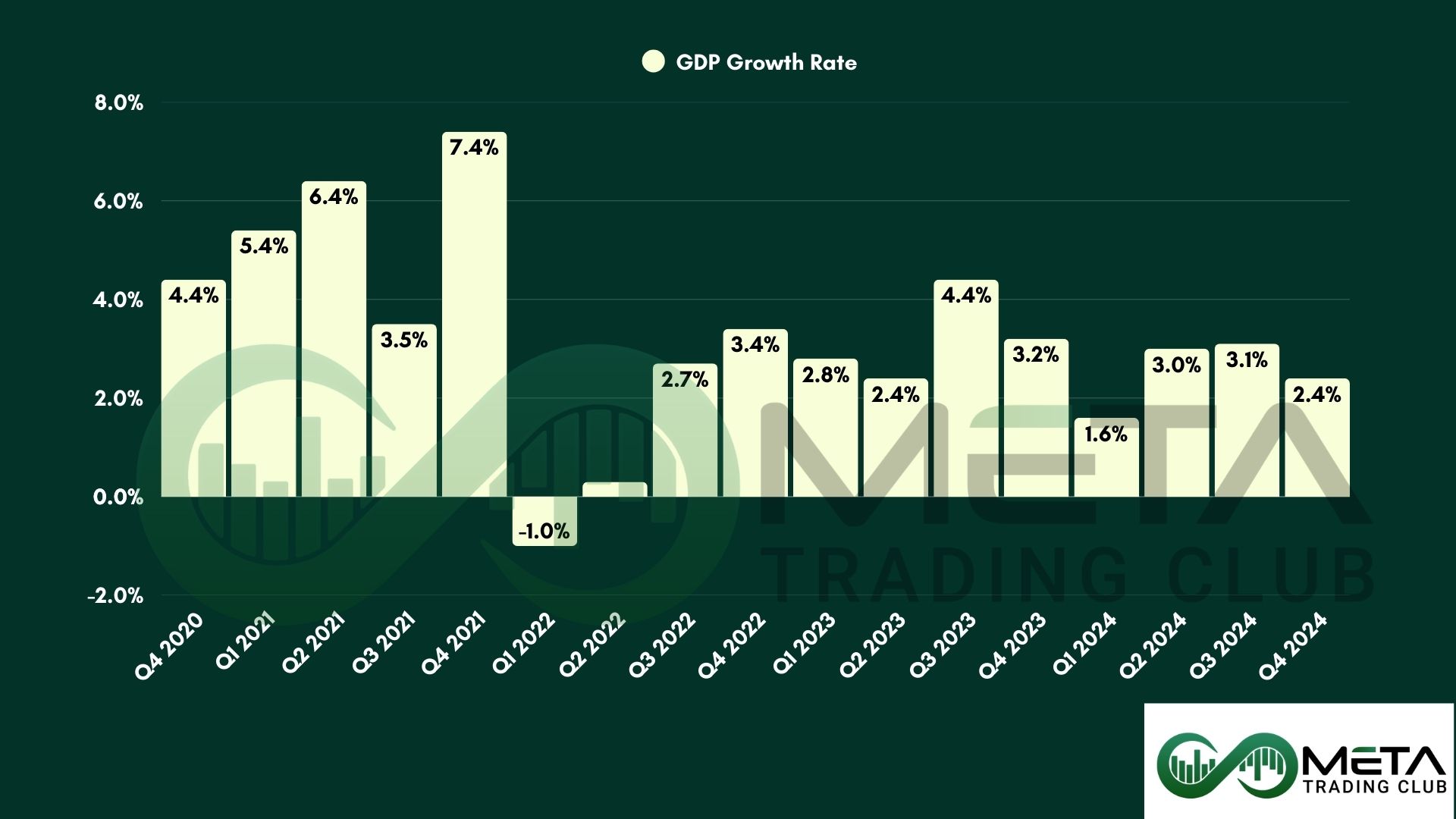The Producer Price Index (PPI) measures the average change over time in the prices that domestic producers receive for their goods and services. Also, it’s a key indicator of inflation at the wholesale level, reflecting price changes from the perspective of the seller rather than the consumer.
The Bureau of Labor Statistics (BLS) releases the Producer Price Index (PPI) report monthly, providing crucial insights into the average change over time in the selling prices received by domestic producers for their goods and services. The report is typically released around the 12th of each month at 8:30 AM Eastern Time. It includes data on various industry classifications, commodity classifications, and the Final Demand-Intermediate Demand system. These offer a comprehensive view of price changes across different sectors. This data is essential for economists, policymakers, and businesses to understand inflationary trends and make informed decisions.
December Producer Price Index
The Producer Price Index (PPI) rose by 0.2% in December, below expectations of 0.3%. This followed a 0.4% rise in November and a 0.2% increase in October. Also, the index increased 3.3% in 2024 after a 1.1% increase in 2023.
Core producer prices, which exclude food and energy costs, were unchanged from the previous month in December of 2024. Also, annual core producer inflation was at 3.5% in December of 2024, remaining unchanged from the upwardly revised value from the previous month.
Final Demand Goods
The index for final demand goods increased by 0.6% in December, marking the third consecutive rise. This surge is mainly due to a 3.5% jump in the index for final demand energy. In contrast, prices for final demand foods edged down by 0.1%, while the index for final demand goods excluding foods and energy remained unchanged.
Notable product details include:
- Gasoline prices surged by 9.7%.
- Prices for residential electric power, meats, motor vehicles, gas fuels, and fresh fruits and melons also rose.
- Prices for fresh and dry vegetables declined by 14.7%, along with drops in carbon steel scrap and residual fuels.
Final Demand Services
The index for final demand services remained unchanged in December following a 0.3% increase in November. A 2.2% rise in prices for final demand transportation and warehousing services offset declines in other areas.
Specific details include:
- Prices for transportation of passengers increased by 7.2%.
- Increases were also seen in deposit services, automotive fuels and lubricants retailing, food retailing, and chemicals and allied products wholesaling.
- Declines were noted in traveler accommodation services, machinery and vehicle wholesaling, loan services, food wholesaling, and furniture retailing.
Image Source: U.S. Bureau of Labor Statistics
Impacts of December PPI Data on Market
Higher PPI (Producer Price Index) readings can indeed raise concerns about the possibility of a rate cut by the U.S. Federal Reserve.
However, below expectation PPI data, can boost market confidence and lead to stock price increases.
The data shows lower than expected inflation, it can lead to a positive market reaction. The SPY traded a bit higher in pre-market following the release of the PPI data.














